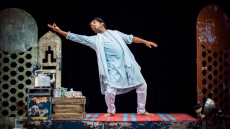“Fair skinned, tall, slender yet curvy.”
Who hasn’t heard an aunty or a peer put them down for being too dark or too fat? From matrimonial advertisements to dating apps to drawing room conversations, women have long been obsessed with this specific form of idealised beauty.
According to Neetu Sahota, a Vancouver-based makeup artist and instructor at Vancouver Community College, Bollywood and the media have created a particular and narrow image of a ‘beautiful’ woman that every girl wants to squeeze into.
“Clients will often bring in images of actresses such as Aishwarya [Rai-Bachchan] or Kim Kardashian, wanting to look like them instead of using the photo as inspiration. Many clients often want to alter their skin colour, skin texture and face shape rather than enhance the beauty they have; they want a full transformation,” she says.
Body image dissatisfaction and body shaming are not new phenomena. For centuries women have toiled and struggled to fit into society’s conceptions of ‘acceptable’. With the development of technologies such as air brushing and the growth of the multimillion dollar industry that rests itself on furthering narrow definitions of beauty, the only thing that has declined is women’s self esteem.

Body image dissatisfaction is the difference of what a person perceives should be their weight and what it actually is. Body shaming is sometimes a follow up that results when people are shamed and bullied for not being of a specific body type. According to research, this bullying is not only coming from peers but many a times from parents, teachers and even partners.
According to statistics cited by the Canadian Women’s Foundation, 60 per cent of girls in Grade 10 across the country were found to be following a ‘diet’. In a study conducted in BC, 60 per cent of girls who were too thin perceived themselves to be ‘too fat’. This obsession with maintaining a certain physique has a direct linkage with sexualization that leads girls to think that their achievements lie in looking a certain way and other accomplishments are secondary.
Meanwhile, considerable academic research has been dedicated to understanding this phenomenon since the past two decades. However, much of this has been taking place in the Global North focusing on White women. Media campaigns are tailing behind too, albeit slowly. For many this is still considered to be a first world problem. Why then are more and more women of colour, particularly of South Asian descent, being subjected to body shaming too?
South Asian culture presents an interesting case study in this regard. Communal life and strong family values have long been considered a strength by Asian cultures. Unfortunately, in some cases, this communal pressure exerts itself on young girls and women, affecting their self-worth negatively.

The propagation of traditional gender roles is one of the most important factor that affects women in this regard. Some of this may be attributable to certain religious beliefs, but some have roots in the cultural ethos. Girls are taught to live their lives in a way so as to be pleasing to the male gaze, in order to get married; an institution that is central to the communal nature of South Asian culture.
Side by side, tabloids have long flourished by highlighting cellulite on celebrity’s bodies. An icon such as Aishwarya Rai-Bachchan even faced the brunt of shamers when she gained weight during child birth. Similarly, television shows and movies lack diversity in the kinds of actors that they cast in lead roles. Hardly any films have experimented with casting bigger, bulkier women as lead characters unless the film revolves around the subject of fat phobia. The resulting eating disorders and depression issues among teenage girls therefore should not come as a surprise.
Hareem Farooq, a Pakistani film actress, has recently shed light on the issue of shaming and bullying and started a healthy conversation on this subject in Pakistan as well. “People basically fantasize about women in the media. For them, they have to be perfect, what they forget is that women in this profession are also humans. The reason I spoke about fat shaming is that it’s something that’s really tiny and meaningless; it doesn’t contribute to your skill in any way. But what we do to people, while shaming them, contributes negatively to their life. Body shaming or any kind of shaming affects confidence and I’ve seen people get mentally exhausted and depressed,” she says.

Meanwhile, advertising campaigns such as ‘Dark is Beautiful’ are trying to create space for this dialogue and have been considerably successful. However according to Sahota, they must reach a larger audience in order for them to reap more successes. She points towards Bollywood’s role as a change maker in this regard.
“Does this campaign have an impact? Yes, it does however it isn’t reaching a mass population of the South Asian community in the way Bollywood is. Could concepts of beauty begin to change in newer generations if they grew up to actresses of all skin colours and body types? Yes, I think Bollywood has the potential to make a much larger impact on conceptions of beauty,” she explains.
She also emphasises the role individuals working in the industry can play independently. “At times, makeup artists are acting as moral support for women who are trying to embrace their individual beauty but feel they cannot because they must conform to society’s pressures. Instead of artists seeking to transform a client’s look, they should seek to enhance the beauty the client already possesses,” she says.
It is also important to realise that success whether in the personal or the professional sphere comes through heightened self worth and confidence. Sonakshi Sinha, is one name that has fought against the odds and vitriolic critique by the media but has risen successful. She has encouraged younger women to vest confidence in themselves and to appreciate that beauty comes in all shapes, colours and sizes. According to her: “I have always maintained that be proud of who you are and the way you are. Every individual must learn to be comfortable in their own skin and flaunt their unique body type. Your different body type is your USP that sets you apart from the rest. The world would be dull if we all looked alike. Don’t chase a particular body type , be a perfect human not just a human with a perfect body.”





